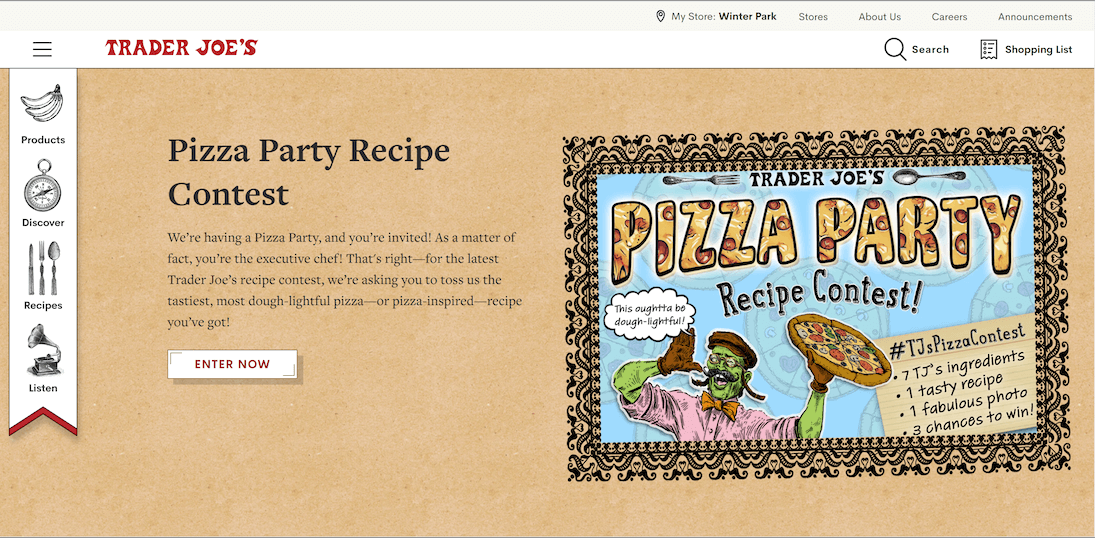What Is Brand Positioning?
Brand positioning is a business strategy that communicates your unique value proposition and what distinguishes your brand. It tells customers why they should prefer your brand. In practice, it will define how the public views your brand and ideally, build brand awareness, emotional connection, and loyalty.
Effective brand positioning enables you to tell your company’s story and resonate with your target customers. Without it, your brand can be lost in the competitive mix and appear vague or not unique within the market.
"Position or be positioned,” says Lindsay Pedersen, owner of Ironclad Brand Strategy and author of Forging an Ironclad Brand: A Leader's Guide. “If you don't do it proactively, the market will do so for you, and you won't love the result.”

Owner of Ironclad Brand Strategy and author of Forging an Ironclad Brand: A Leader's Guide.
Why Is Brand Positioning Important?
Brand positioning is how you explain a business’s value and differentiate it from competitors. Companies use brand positioning to connect practically and emotionally with their audience, giving them reasons to become loyal customers. Positioning can also foster innovation and support pricing.
“With brand positioning that is overt, intentional, and specific, growth can be clear and fueling," Pedersen says.
Effective brand positioning helps companies control their reputation and evolve their brand identity based on the needs of their customers, target audiences, and industries. Brand positioning enables the following:
- Differentiation: Brand positioning focuses on a brand’s unique value proposition, value-adds, benefits, and how that separates it from competitors. You can complete a brand positioning map to help you identify unique attributes — check out our free mapping worksheet in the brand positioning starter kit below.
- Emotion: Brand positioning uses emotional messaging to connect a business with customers and to build loyalty and trust.
- Pricing Justification: Brand positioning can support the reasons why you price a good or service lower or higher by focusing on the reasons. For example, you can focus on quality for higher prices or inexpensive resources for lower prices.
- Innovation: Brand positioning thrives on unique competitive products. This can encourage creativity in branding, product, and services, as well as improve market differentiation.
How To Create a Brand Positioning Strategy
To create a brand positioning strategy, first review your existing positioning and identify the heart of your brand. Do some research to learn more about your target customers and competitors, as well as gain clarity on your unique value proposition. Identify which positioning strategies to use, workshop your statement, gather feedback, and share your slogan.
During this process, you should explore a few questions: What do your customers want and need? How do your competitors position themselves? What are your unique selling points? Use the answers to these questions to create your strategy. Take all these considerations into account to establish an effective, realistic brand positioning strategy, regardless of your product or service.
You also might rebrand to change your brand positioning.
Brand Positioning Starter Kit
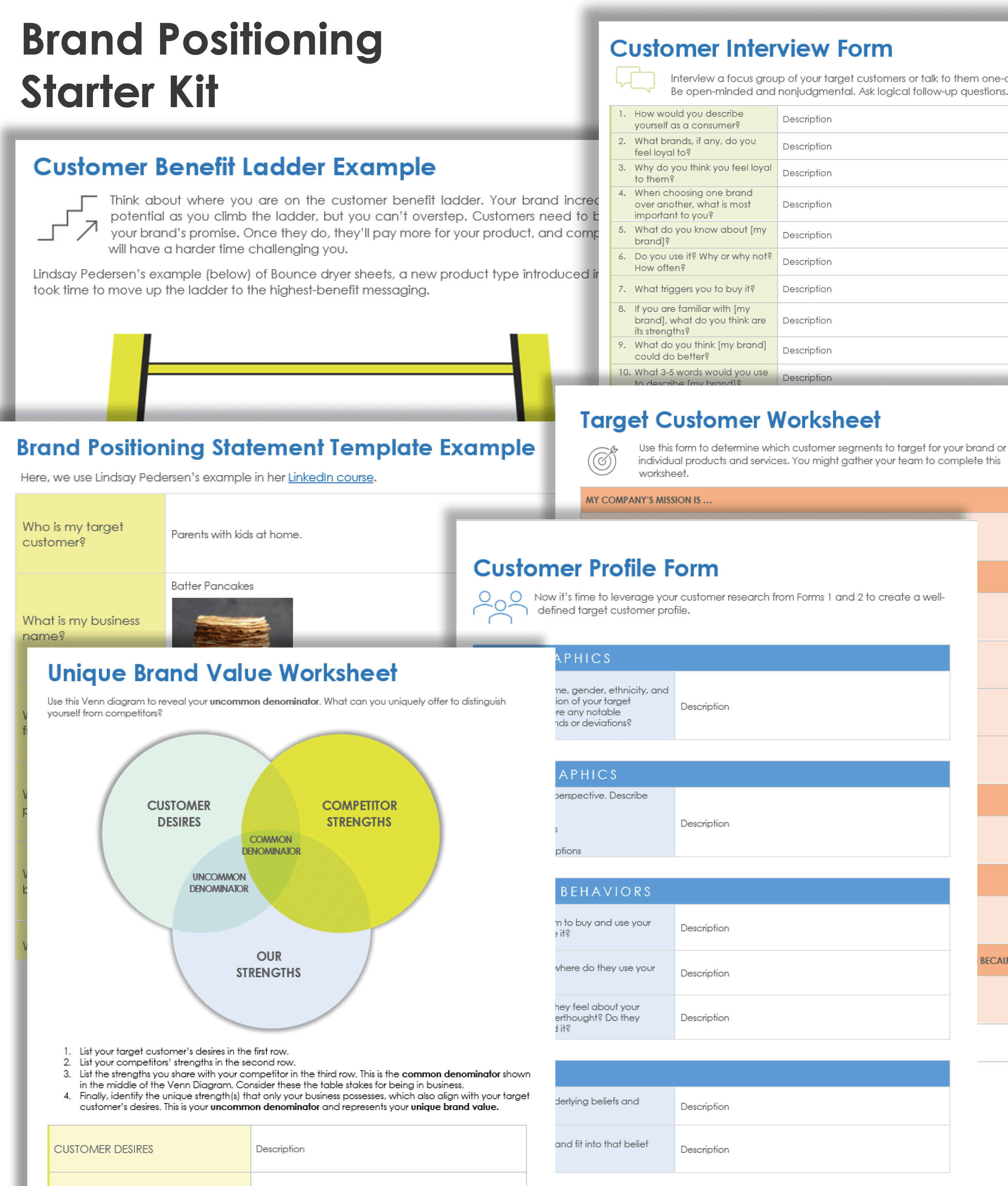
Download the Brand Positioning Starter Kit
This starter kit provides the necessary materials to develop a brand positioning strategy. We based them on the steps in the LinkedIn video course created by Lindsay Pedersen. Use the six customizable templates below in order to guide you through research to an effective brand positioning statement.
In this kit, you’ll find:
- A target customer worksheet for Microsoft Word to determine which consumers you should seek.
- A customer interview form for Microsoft Word that provides sample questions to ask and space to record responses.
- A customer profile form for Microsoft Word to summarize the main themes from the customer interviews.
- A unique brand value worksheet for Microsoft Word to fine-tune what is a truly unique value about your product or service vs. other brands.
- A brand benefit ladder template for Microsoft Word to brainstorm how you can climb the ladder toward high-level benefits in your messaging.
- A brand positioning statement template for Microsoft Word to help distill your essential brand positioning into one concise statement.
Brand Positioning Examples
Brand positioning examples show how well-known competitors differentiate themselves in their markets. Many use a blend of strategy types, though they typically center on one or two. These examples illustrate how companies in the same vertical use brand positioning to attract customers.
Trader Joe's vs. Whole Foods Brand Positioning
Trader Joe's focuses on offering affordable, unique products with a fun shopping experience, while Whole Foods emphasizes premium quality, organic products, and a commitment to sustainability.
| Brand | Positioning Strategy | Target Customers |
|---|---|---|
| Trader Joe’s | Lifestyle-based | Younger, budget-conscious consumers who value convenience and unique products |
| Whole Foods | Quality-based | Health-conscious individuals willing to pay a premium for high-quality, organic goods |
L’Oréal vs. Maybelline New York Brand Positioning
L’Oréal and Maybelline New York are both part of the L’Oréal group. L’Oréal connects with customers through aspirational messaging and luxury branding, while Maybelline New York highlights providing affordable, quality beauty products for everyday use. This example shows how brand positioning can help a company reach a broader range of customers.
| Brand | Positioning Strategy | Target Customers |
|---|---|---|
| L’Oréal | Emotional-based | Consumers seeking prestige, luxury beauty products |
| Maybelline New York | Value-based | Budget-conscious buyers looking for quality makeup at an affordable price |
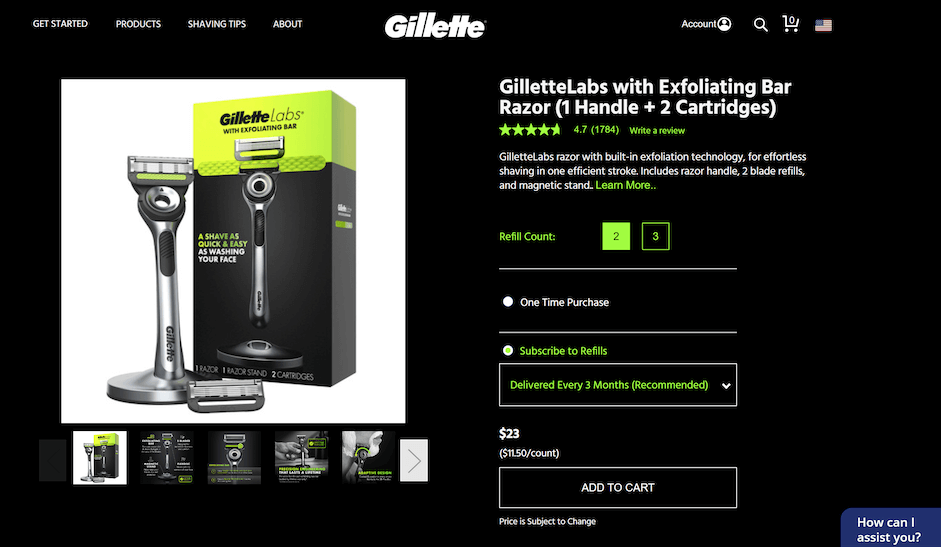

Gillette vs. Dollar Shave Club Brand Positioning
Gillette emphasizes precision engineering and performance in shaving products, while Dollar Shave Club’s positioning disrupts the market with subscription-based services that focus on convenience and value.
| Brand | Positioning Strategy | Target Customers |
|---|---|---|
| Gillette | Quality-based | Consumers who value premium quality and performance in grooming products |
| Dollar Shave Club | Differentiation | Price-conscious shoppers looking for convenience and value in shaving solutions |
Nike vs. New Balance Brand Positioning
Nike inspires athletes with its confidence-building "Just Do It" ethos and innovative designs, while New Balance focuses its athletic footwear branding on craftsmanship, comfort, and performance.
| Brand | Positioning Strategy | Target Customers |
|---|---|---|
| Nike | Emotional-based | Athletes and fitness enthusiasts seeking motivation and cutting-edge sports gear |
| New Balance | Quality-based | Individuals who prioritize comfort, support, and quality in their athletic footwear |
United Airlines vs. Southwest Brand Positioning
United Airlines uses its branding to address travel challenges with premium services and solutions, while Southwest emphasizes affordability, simplicity, and customer-friendly policies.
| Brand | Positioning Strategy | Target Customers |
|---|---|---|
| United Airlines | Problem/solution | Business travelers and passengers valuing premium services and reliability |
| Southwest | Value-based | Budget-conscious travelers seeking affordable fares and a no-frills travel experience |
Taco Bell vs. Chipotle Brand Positioning
Taco Bell’s branding strategy emphasizes convenience, speed, and value in its fast-food offerings, while Chipotle focuses on fresh ingredients, customization, and sustainability in its "Food with Integrity" approach.
| Brand | Positioning Strategy | Target Customers |
|---|---|---|
| Taco Bell | Convenience-based | Younger consumers looking for quick, affordable fast-food options |
| Chipotle | Quality-based | Health-conscious individuals seeking high-quality, customizable Mexican-inspired cuisine that’s delivered fast |
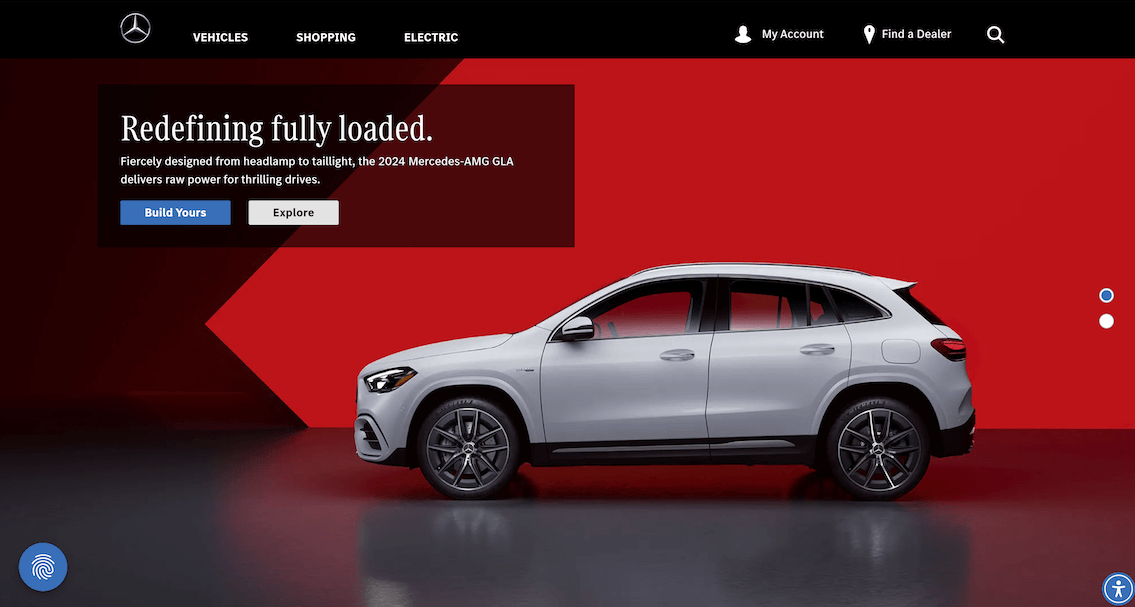
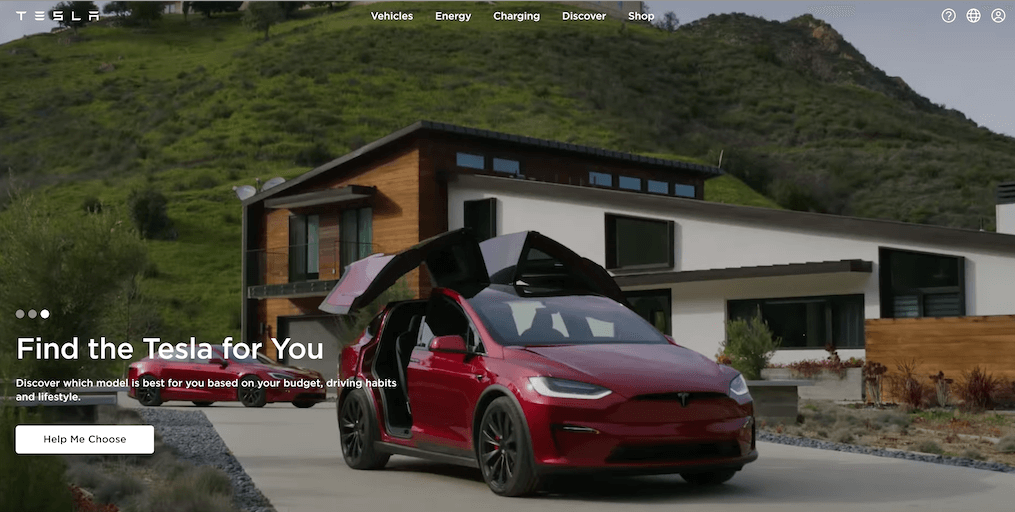
Mercedes-Benz vs. Tesla Brand Positioning
Mercedes-Benz aligns itself with luxury, tradition, and status in the automotive industry, while Tesla highlights its innovative electric vehicles with branding that focuses on sustainability and cutting-edge technology.
| Brand | Positioning Strategy | Target Customers |
|---|---|---|
| Mercedes-Benz | Lifestyle-based | Affluent consumers who value luxury and prestige in their vehicles |
| Tesla | Differentiation | Tech-savvy individuals interested in eco-friendly transportation solutions with advanced features |
How to Communicate Your Brand Positioning
Communicating your brand positioning starts with creating a compelling story to share across channels. Encourage and implement customer feedback, and establish a cohesive visual identity that supports the brand position. These steps work together to tell your brand positioning.
Follow the expert advice in these steps to communicate your brand positioning effectively:
- Tell a Compelling Brand Story
Develop a narrative that resonates with your target audience. Highlight your personality, unique value proposition, and differentiation.
“Consumers want to know what your brand stands for,” says Anat Baron, founder of Stashwall and a futurist keynote speaker. “Is it lower price, better quality, and what will it do for them? Will it make their lives better? Telling consumers your brand values and communicating them through everything from the name and logo to colors and packaging or online branding all contribute to creating a brand position that consumers gravitate to, and customers stick with.”
- Cultivate an Emotional Connection
Develop deeper connections with your audience that go beyond the functioning of your products and services.
“A brand is just another way of saying you want to connect emotionally with your buyers, your partners, and your customers,” says Cari Jaquet, Chief Marketing Officer at Normalyze. “Sharing stories that embody your brand's values and mission, such as customer testimonials, behind-the-scenes looks at your product creation, or your brand's journey, make your brand memorable and can convey your positioning in a relatable way. - Use Consistent Messaging Across Channels
Ensure that you communicate your brand positioning consistently across all touchpoints. Staying on message is also known as brand compliance. Jaquet explains, “Every customer touchpoint, including your website, social media, advertising, product UX, delivery and packaging, and customer service, and every partner communication reinforces your brand identity — all of it matters and all of it needs to work together.”
Brand messaging also should align with your overall brand communication approach. - Ensure Buy-In Internally
Everyone involved in brand positioning and messaging should be aligned. Otherwise, it’s easy to go astray and send mixed messages. “When you decide on your brand promise, identity, and messaging, everyone in the company is an ambassador,” Jaquet shares. “If everyone is amplifying the same brand in everything they work on, in every engagement they have, the power of that brand is elevated.” - Engage With Customers
Encourage feedback from customers to understand how they perceive your brand positioning and make necessary adjustments. - Develop Your Visual Identity
Align your visual elements, such as logo, colors, and imagery, with your brand positioning to create a cohesive brand image.“This is not just making sure everyone uses your logo correctly,” advises Jaquet.
“This is aligning your brand's visual elements (logo, color scheme, typography) with your positioning. For example, if your brand is about luxury and sophistication, your visual identity should convey elegance and exclusivity. If your brand is fun and approachable, using bright colors and happy faces might be perfect.” - Employee Training
Educate your staff to communicate the brand positioning in their interactions with customers.
How to Measure the Success of Your Brand Positioning
Collect and monitor data and customer feedback to measure the success of your brand positioning. Use metrics such as social media mentions, website traffic, and revenue. Conduct brand perception surveys and analyze customer feedback, and conduct a competitive analysis to see how you stack.
Anat Baron believes the most important measure is the bottom line. “Success is always measured by X times Y,” she states. “That is, do your target consumers convert to customers, and how much do they buy?”
Here are some ways to measure the success of your brand positioning:
- Brand Awareness: Monitor metrics such as brand recall, social media mentions, and website traffic to gauge the awareness of your brand positioning.
- Brand Perception Surveys: Conduct surveys to assess how customers perceive your brand compared to competitors and track changes over time.
- Sales and Revenue Growth: Analyze sales data and revenue trends to see if your brand positioning translates into increased customer acquisition and retention.
- Customer Feedback: Gather customer feedback through reviews, testimonials, and surveys to understand their sentiment towards your brand positioning.
- Competitive Analysis: Compare your brand positioning metrics with competitors to identify strengths, weaknesses, opportunities, and threats (a SWOT analysis).
How to Improve Brand Positioning
Experts recommend using market research and a feedback loop to keep improving your brand positioning. Innovate to differentiate your brand from competitors, and keep adapting and stay updated on best practices. Your brand positioning must evolve along with the market.
“Your brand positioning needs constant monitoring,” Baron advises. “We live in a world that's constantly changing. Economic conditions, competitors, social media — these all play a part in how your brand is perceived.”
Here are some tips on how to improve your brand positioning:
- Market Research: Conduct market research to understand evolving consumer needs, competitor strategies, and industry trends that can impact your brand positioning. “Audits every 6-12 months are key to re-assessing the market and making any necessary changes and updates,” Baron suggests.
- Feedback Loop: Establish a feedback loop with customers, employees, and stakeholders in which you gather insights and refine and enhance your brand positioning.
- Innovative Differentiation: Identify new ways to differentiate your brand from competitors by innovating products, services, or customer experiences.
- Adaptability: Stay agile and adaptable, and remain open to adjusting your brand positioning based on market feedback and changing business landscapes.
- Continuous Learning: Invest in learning opportunities to keep your team updated on best practices in branding and marketing for continuous improvement of your brand positioning strategy.
- Brand Pyramid: Try these brand pyramid templates to define or refine your brand. From bottom to top, you specify your product attributes, functional benefits, emotional benefits, brand persona, and brand essence.
- Brand Benefit Ladder: Use the brand benefit ladder framework, where you define the functional, emotional, and highest benefits in that order, to develop a cause-and-effect relationship between your product and its effect on your customer. Climb the benefits ladder to reach emotional appeals that your customers can believe in.
Brand expert Lindsay Pedersen gives the example of Bounce dryer sheets. When the dryer sheets were introduced in 1975, it was a brand-new product type. Therefore, the marketing had to explain how it worked, as well as the benefits. The marketing became more emotional only once consumers had more brand awareness, as shown in the brand benefit ladder below.
Create and Maintain Powerful Brand Positioning With Smartsheet
The best marketing teams know the importance of effective campaign management, consistent creative operations, and powerful event logistics -- and Smartsheet helps you deliver on all three so you can be more effective and achieve more.
The Smartsheet platform makes it easy to plan, capture, manage, and report on work from anywhere, helping your team be more effective and get more done. Report on key metrics and get real-time visibility into work as it happens with roll-up reports, dashboards, and automated workflows built to keep your team connected and informed.
When teams have clarity into the work getting done, there’s no telling how much more they can accomplish in the same amount of time. Try Smartsheet for free, today.
